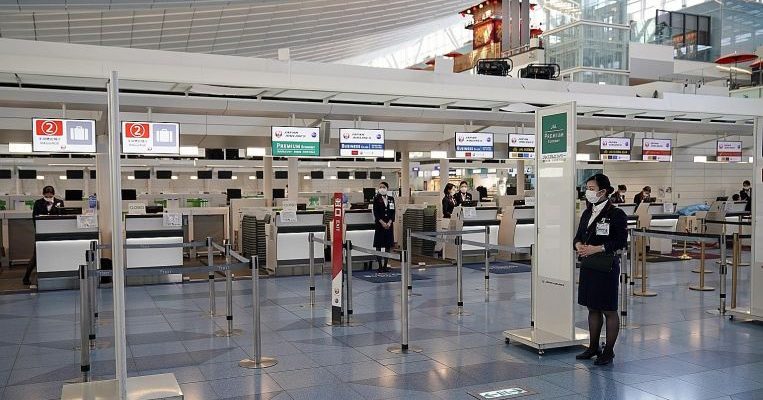
Tokyo’s Haneda Airport is expanding its flight routes from today, in a scheduled move intended to meet travel demand which has now evaporated in the face of the coronavirus pandemic.
But the new flight paths, which will bring large passenger aircraft over heavily populated residential districts in Tokyo, were controversial even before now. Pilots have raised safety concerns about the new routes, and residents have complained about noise pollution.
With the expansion, Haneda Airport’s Terminal 2, which has served only domestic flights, will now also handle international traffic.
And Haneda Airport International Terminal will now be renamed Terminal 3.
The new routes will raise the airport’s capacity for international departures and arrivals by 50 flights a day. This will increase the total annual number of flights by 39,000 from 447,000 now to 486,000, bringing an estimated yearly economic benefit of 650 billion yen (S$8.6 billion).
The expansion was timed to cater to an expected surge in visitors for the Tokyo Olympic and Paralympic Games, but these events have now been put off to next year. Japan’s goal of attracting 40 million visitors this year also appears out of reach, with tourist arrivals in free fall.
And worse is yet to come after a 58.3 per cent plunge in tourist arrivals last month, because of the worldwide travel curbs in place. About 70 per cent of international flights at Haneda Airport have been cancelled, according to figures from the Ministry of Land, Infrastructure, Transport and Tourism.
The new flight paths will take large jets directly above central Tokyo districts such as Shibuya, Shinjuku and Shinagawa between 3pm and 7pm, at least initially. There could be as many as 40 an hour, depending on the routes.
At least 24 grassroots groups have petitioned the Transport Ministry – some as early as two years ago – to call off the plan because of the noise pollution and the risk of accidents.
But on Friday, Transport Minister Kazuyoshi Akaba said: “This period of reduced flights can serve as a runway towards the full operation of the new flight routes. We will continue to gather data, thoroughly re-examine noise and safety measures during this period.”
A trial run between Jan 30 and March 11 showed sound levels hitting 87 decibels to 94 decibels over the city of Kawasaki, which is about 18km from Tokyo. This, local media said, would be “louder than inside a pachinko (slot machine) parlour”.
IN THE LEAD-UP
This period of reduced flights can serve as a runway towards the full operation of the new flight routes. We will continue to gather data, thoroughly re-examine noise and safety measures during this period.
TRANSPORT MINISTER KAZUYOSHI AKABA
The trial also showed that one in five flights exceeded the government’s noise estimates.
Shinagawa resident Kiwami Omura, who leads one of the citizens’ groups, said the noise was “unbearable” and would be stressful to the elderly as well as disruptive to students.
To reduce noise levels, the Transport Ministry has recommended that planes fly at a higher altitude and descend at an angle of 3.45 degrees.
But Hokkaido University’s Professor Toshihito Matsui, who studies noise pollution, told the Nikkei newspaper that this would reduce sound levels by only an “imperceptible” two decibels.
The angle of descent is also steeper than the three-degree angle recommended by the International Civil Aviation Organisation.
During the trial run, an Air Canada plane was forced to abort its landing at Haneda Airport as it could not land at 3.45 degrees, and instead landed at Narita International Airport, about 63km away.
The International Federation of Air Line Pilots’ Associations said in a statement that the steeper angle could “potentially lead to increased occurrences of hard landings and long landings”.
Mr Hiroshi Sugie, an aviation expert who was a Japan Airlines pilot for 40 years, said a steep approach is typically used only for airports surrounded by major obstacles such as mountains, and that Haneda would be the only major airport in the world to have such a steep angle.
“From a pilot’s perspective, even 0.1 degree makes a big difference,” he said. “A gentler angle will mean an easier and smoother landing.”
